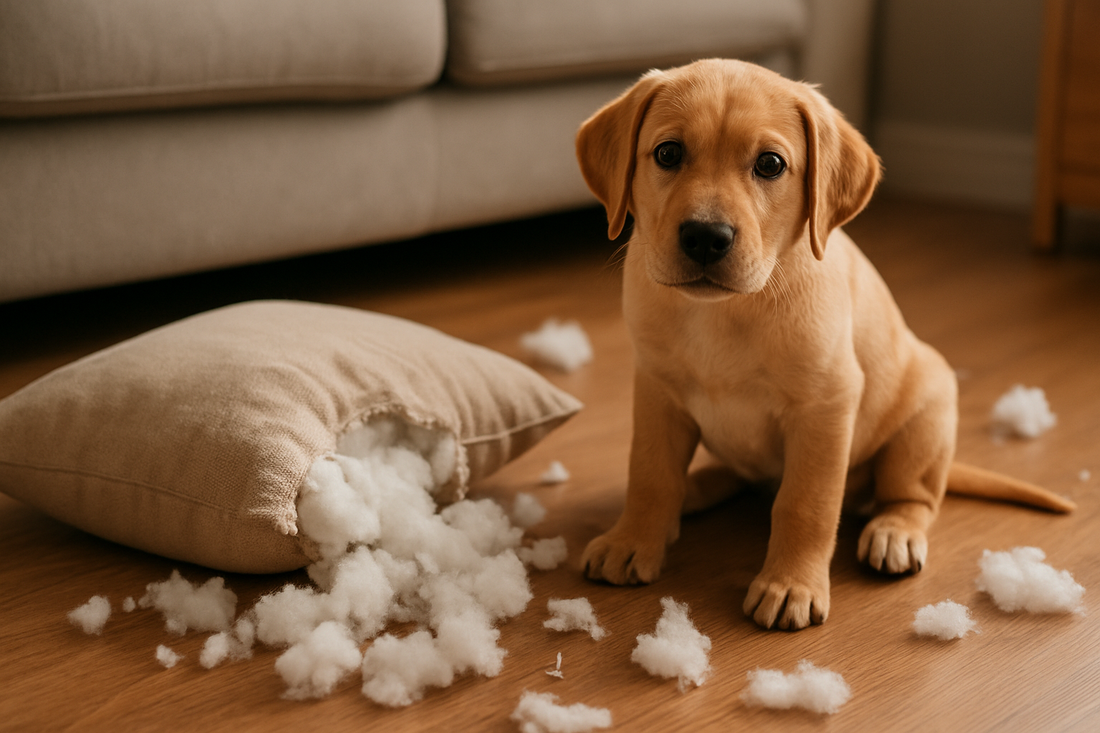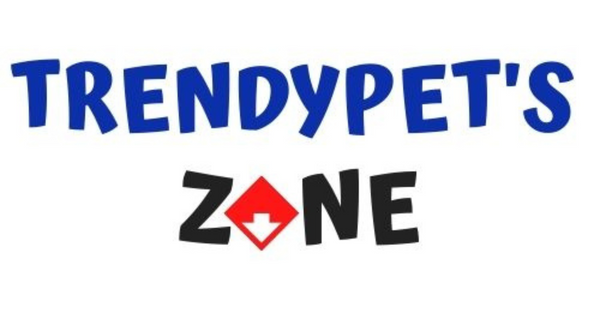
WHY IS MY DOG CHEWING EVERYTHING? 7 Proven Solutions
“Chewing is one of the most common behavior issues dog owners face - but it’s also one of the easiest to fix once you know the root cause.”
If you’ve ever come home to shredded shoes, chewed-up furniture, or destroyed pillows, you know how frustrating (and expensive) destructive chewing can be. But here’s the good news: chewing is a natural dog behavior, and with the right approach, you can redirect it into something positive.
In this guide, we’ll cover the reasons dogs chew and 7 proven solutions to save your belongings — and your sanity.
🐾 Why Dogs Chew?

Before fixing the problem, it’s important to understand why your dog is chewing everything in sight:
Teething (puppies) → Just like babies, puppies go through teething stages that make them chew to relieve discomfort.
Boredom → Dogs left alone without enough mental or physical stimulation often chew to pass the time.
Anxiety or Stress → Separation anxiety, loud noises, or changes at home can trigger destructive chewing.
Instinct & Exploration → Dogs experience the world through their mouths. Chewing is their way of testing textures and scents.
Medical Causes (rare) → Nutritional deficiencies or dental issues can also cause chewing. Always rule these out with your vet if chewing seems unusual.
✅ 7 Proven Solutions to Stop Excessive Chewing
1. Provide the Right Chew Toys - Satisfy natural instincts.

Dogs will chew something — make sure it’s not your shoes. Durable toys like Kong Extreme or Nylabone DuraChew satisfy chewing instincts while keeping teeth healthy.
Pro tip: Rotate toys every few days to keep them “new and exciting.”
2. Increase Daily Exercise - Tire out that extra energy.

A tired dog is a happy dog. Long walks, fetch, or tug-of-war reduce boredom-driven chewing. For high-energy breeds, aim for at least 60–90 minutes of activity daily.
3. Offer Mental Stimulation - Keep their brain busy.

Boredom isn’t just physical — dogs need mental workouts too. Try puzzle toys, treat-dispensing balls, or basic obedience training to keep their minds busy.
4. Use Safe Deterrent Sprays

If your dog keeps targeting furniture or shoes, use a pet-safe bitter spray to make items less appealing. Combine this with redirection to a chew toy for best results.
5. Redirect with Positive Reinforcement

Whenever your dog chews the right item (like a toy), praise and reward them. Dogs learn quickly when good behavior = treats and attention.
6. Address Anxiety Triggers

If chewing happens mostly when you’re away, your pup may have separation anxiety. Try leaving them with interactive toys, calming music, or a safe crate space. In severe cases, consult a trainer.
7. Schedule a Vet Check

If chewing seems obsessive or new, consult your vet to rule out dental issues or health-related causes.
🚫 What NOT to Do
→ Don’t use crates as punishment — they should always feel like a safe space, not a timeout zone.
→ Don’t punish your dog after the fact. They won’t connect the behavior to the scolding.
→ Don’t take away chewing completely — it’s natural and necessary for their wellbeing.
🎯 Final Thoughts
Chewing doesn’t have to mean chaos. With the right mix of toys, training, and patience, you can guide your dog toward healthy chewing habits while protecting your home.
“Start small: pick one new toy, add an extra walk, or try a puzzle feeder this week. You’ll be amazed at how quickly your dog’s chewing habits improve.”

👉 Want to see our top picks for durable dog toys? Check out our Best Dog Toys for Heavy Chewers
Tags: stop dog chewing, dog chewing furniture, dog destructive chewing solutions, puppy chewing phase
